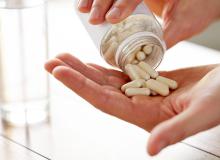For normal people, postprandial hyperglycemia refers to blood sugar >7.8mmol/L 2 hours after eating. For patients with diabetes, postprandial hyperglycemia generally refers to blood glucose greater than 10 mmol/L 2 hours after a meal. Postprandial hyperglycemia is associated with an increased risk of microvascular and macrovascular complications and multiple cardiovascular diseases in diabetic patients. In addition, as the disease progresses, increased postprandial hyperglycemia and blood sugar fluctuations can impair pancreatic beta cell function. worsen further. Postprandial hyperglycemia and postprandial blood glucose fluctuations are associated with overall cognitive, executive, and attentional impairments in the elderly. Therefore, sugar lovers should actively control postprandial blood sugar.
Postprandial blood sugar control goals should follow individualized principles. Controlling postprandial blood sugar is very important to achieve the target of glycated hemoglobin and reduce blood sugar fluctuations.
Generally, the postprandial blood sugar control goals for diabetic patients are:
① General goal: postprandial blood sugar <10.0 mmol/L
② For patients with type 2 diabetes who are newly diagnosed, have a short course of disease, are younger, and have no complications of diabetes or serious concomitant diseases, the control target is postprandial blood glucose ≤10.0 mmol/L
So how to control blood sugar after meals?
1. Adjust your eating structure and habits and eat smaller meals more frequently:
① Control the amount of food you eat, eat seven to eight times full each time, and eat smaller meals more frequently. For staple food, try to choose whole grains or whole wheat foods with higher dietary fiber content.
② Try not to eat or eat less food such as gruel that can significantly increase postprandial blood sugar.
2. Exercise appropriately after meals.
It is recommended to start exercising half an hour after a meal. Aerobic exercise should be chosen (such as jogging, brisk walking, etc.). The intensity of exercise should not be too high, and the time should be controlled between 30 and 45 minutes. Consume body heat and help lower postprandial blood sugar.
3. Choose medications appropriately.
At present, drugs mainly used to reduce postprandial hyperglycemia include: non-sulfonylurea insulin secretagogues, α-glycosidase inhibitors, rapid-acting insulin analogs, short-acting insulin, and pre-medication drugs that take into account both postprandial and fasting blood glucose. Mix insulin.
Under the guidance of a doctor, rationally choose drugs to control postprandial blood sugar. You must consult a doctor before taking the drug. It is prohibited to use drugs recommended by other people with diabetes without permission.

